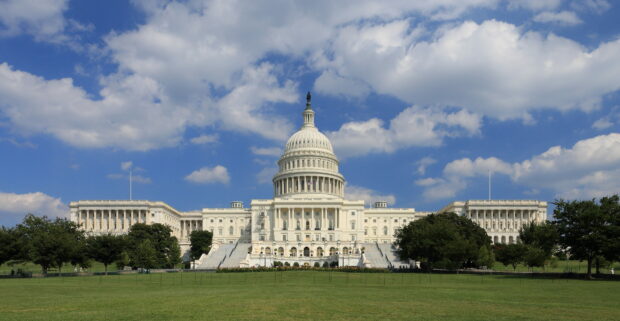HOME | ABOUT US | MEDIA KIT | CONTACT US | INQUIRE
HOME | ABOUT US | MEDIA KIT | CONTACT US | INQUIRE
With a couple of notable exceptions, Missouri and Kansas saw Republican voters flex their muscles once again.

The 2022 races for Congress commanded the vast majority of media coverage throughout the summer and fall, and the outcomes might have justified that interest in another highly competitive congressional cycle.
With counting still taking place in California 10 days after the voting, it appeared that Republicans would assume control of the U.S. House by about as slender a margin Democrats had last year, flipping from 222-212 to 222-213 when the final open seat was filled in this round of voting.
Across the Capitol building, Democrats did just enough to retain power in the Senate.
The good news for business is that the nation will have a divided government in terms of political parties and a measure of policy stability for the next two years. The bad news for the Biden administration is that his agenda is virtually assured of going on the shelf for the remainder of his term, with few prospects for passage in each chamber.
America’s pundit and polling class, again—misread the tea leaves on this cycle. Projections for a Republican steamroller in the House never materialized.
That may have more to do with the way congressional races are structured than it did with voter sentiment: Republicans ran up heavy margins in many rural districts on the way to a 5 million-vote majority nationwide, but they took their lumps, as usual, in most urban and many suburban districts.
It’s a reverse of the dynamic that had generated Democratic complaints about the Electoral College in 2000 and 2016, when Republican presidents emerged despite a national majority among Democratic voters.
While that swing in the House leaves the GOP with tenuous control of the lower chamber, it is far short of the 25-to-40-seat flip anticipated by pollsters going into Nov. 8. And it was an even farther cry from the 64-seat flip in the 2010 elections that followed the great Obamacare/recovery-spending blow-back that gave rise to the short-lived Tea Party resistance movement.
The Senate, meanwhile, remained a sterling example of America as a 50-50 Nation. With the chamber evenly split since 2020, Democrats hoped for full control after picking up the GOP seat in Pennsylvania, then attained it by holding on in Nevada—again, just barely. That assures at least a 51-49 majority if incumbent Raphael Warnock can stave off Republican Herschel Walker in a Dec. 6 runoff for the final contested Senate seat in Georgia.
Even if he can’t, Democrats will again rely on Kamala Harris’ vice presidential authority to break any Senate votes that end in a 50-50 tie.
A Senate contest that Democrats had hoped would be competitive was anything but in Missouri, where Eric Schmitt rolled to a 13-point margin over Trudy Busch Valentine. Across the state line, there never was much hope for a Democratic pickup, as incumbent Jerry Moran throttled former Unified Government CEO Mark Holland, 60 percent to 37 percent.
At the congressional level, Missouri retained its 6-2 House split between Republicans and Democrats, with Emanuel Cleaver and Cori Bush carrying their respective Kansas City- and St. Louis-area districts for the Democrats.
Kansas likewise retained the status quo with a 3-1 Republican majority, wherin Sharice Davids earned re-election for the minority party.
Closer to the Kansas City region, political pundits will point to the re-election of Gov. Laura Kelly—coming just months after voters rejected legislative authority to tighten abortion laws—as further evidence of the “purpling” of a deep-red Kansas. How, then, would that claim square with the election of Republican firebrand Kris Kobach as attorney general? Or with voting across the Legislature’s districts that once again left the Republicans with potential veto-proof supermajorities in both the 125-seat House and the 40-seat Senate?
Kelly’s claims to be The Jobs Governor will be burnished in a second term only with policies that earn the blessings of Republicans. But if she can top her first-term achievements that concluded with the $4 billion deal to bring Panasonic’s battery plant to Kansas, she’ll leave office in 2027 with a powerful claim to being just that—a jobs generator.
Until then, she and running mate David Toland (who serves as both secretary of commerce and her lieutenant governor) are on a political island: They are the only Democrats holding statewide office. As Kobach was claiming the AG’s mantle, Steve Johnson ousted Democratic incumbent Lynn Rogers as treasurer, and Scott Schwab earned a second term as secretary of state.
In Missouri, Republicans enjoyed a historic showing, sweeping every statewide contest and retaining super-majorities in both the House and Senate of the General Assembly, though by the barest of margins in the Senate. Despite that imbalance, Democrats came within three seats of breaking the GOP’s veto-proof House majority, increasing their numbers from 47 seats to 52.
With only half the Senate facing voters this cycle, Democrats flipped one district, coming within a single seat of denying the GOP a Senate supermajority. They’ll start the 2023 General Assembly session holding 11 seats to the Republicans’ 23.
Nicole Galloway, termed out as state auditor, had been the only Democrat in statewide elected office; treasurer Scott Fitzpatrick will switch roles to claim that office for the GOP.